Average NIMs of some local banks are expected to broaden slightly this year from the 2.28% registered in 2021.
Higher loan defaults, among individual borrowers and corporates, are expected to emerge as interest rate hikes to reduce inflationary pressures grip the economy.
Although the higher rates are good news for banks in terms of profitability, they may also result in loan defaults in the near term.
UCSI University assistant professor in finance Liew Chee Yoong, who is also a fellow at the Centre for Market Education, said the gross impaired loans (GIL) ratio would be higher due to the latest interest rate hike.
UCSI University assistant professor in finance Liew Chee Yoong
“The rise in interest rates will raise the interest expense of loan borrowers and increase their financial risk.
“Therefore, I will not be surprised if more individual and corporate borrowers will be in financial distress due to higher interest servicing this year.
“More loans will be impaired due to the higher likelihood of credit default by borrowers,” he added.
StarPicks
Sunway TES ICAEW- The ideal pathway towards a global career for SPM leavers
The GIL ratio is defined as gross impaired loans as a percentage of gross loans, advances and financing.
Bank Negara has raised its overnight policy rate (OPR) by 25 basis points (bps) to 2.25% on July 6 amid positive economic growth prospects. It was the second consecutive increase after the 25 bps hike in May, which was also the first time the OPR was raised since the onset of the Covid-19 pandemic.
The OPR, which is a benchmark rate that allows banks to determine their lending and deposit rates, had been reduced by a cumulative 125 bps during the pandemic to a historic low of 1.75%.
RAM Rating Services Bhd co-head of financial institution ratings Wong Yin Ching said higher interest rates could impinge on some highly leveraged borrowers, although most borrowers would likely be able to absorb the slightly higher loan instalments.
RAM co-head of Financial Institution Ratings Wong Yin Ching, https://apicms.thestar.com.my/uploads/images/2022/07/11/1654838.jpg
“We may see the banking sector’s GIL ratio rise to 2.5% by end-2022, which is still deemed manageable in our view.
“Provisioning expenses, however, are not anticipated to increase in tandem with impaired loans as banks had judiciously built up provisioning reserves since the start of the pandemic.
“With most of the loan relief measures being progressively wound down in the first half of the year, defaults have begun to trend up,” she added.
The banking industry’s GIL ratio rose from 1.5% as of end-December 2021 to 1.64% as of end-May.
CGS-CIMB Securities analyst Winson Ng also expected higher GIL ratios this year.
“We expect the gross impaired loan ratio to increase 1.8% to 2% at end-December due to the credit risks from the Covid-19 and negative impact from higher inflation and interest-rate hikes.
“Headwinds, including higher inflation, could also be negative for asset quality and loan growth,” he said.
AmResearch banking analyst Kelvin Ong saw a gradual uptick in GIL ratio as the broad repayment assistance (including the Pemulih moratorium) had expired at end-June.
Asset quality ratio for the sector is expected to be higher at around 2% compared with 1.4% as of end December 2021, amid the transition towards targeted repayment assistance, according to him.
Commenting on the downside risk for the sector this year, Ong said: “Any prolonged or worsening supply chain disruptions will impact the pace of economic recovery and consequently affect our estimates for earnings growth of banks.
“Higher inflation pressures will impact consumer spending as well as profit margins of business loan borrowers which will lead to a potential deterioration in asset quality.”
Although most analysts expected the higher net interest margins (NIMs) to boost banks’ earnings from the latest OPR hike, UCSI’s Liew disagreed.
“I don’t think the higher OPR will improve the NIMs of banks. My prediction is that it will be reduced due to lowering demand for bank loans, which reduces the banks’ interest income and average earning asset value (that is, the amount of bank loans that are given out to borrowers).
“The increase in interest rates by the central bank will reduce the demand for bank loans from companies and individuals as the cost of financing becomes more expensive,” he said.
On the other hand, Liew said lenders would need to continue paying interest to risk-averse depositors who put their monies in banks during an economic uncertainty and this would reduce the NIMs.
According to RAM’s Wong, rising interest rates are a boon to NIMs as a majority of the domestic banking industry’s loans are floating-rate facilities, which would reprice faster than deposits.
That said, Wong added that the uplift in NIMs would be moderated by the increasingly deposit competition, as well as slower current and savings account expansion as some depositors go for term deposits.
Overall, Wong said the average NIMs of some local banks are expected to broaden slightly this year from the 2.28% registered in 2021.
NIM is a measure of the difference between the interest income generated by banks and the amount of interest paid out to deposits.
CGS-CIMB’s Ng, who forecast loan growth of 4% to 5% for this year, is projecting a 4% net profit growth, mainly driven by the OPR hike and lower loan loss provisioning.
Ong is maintaining a loan growth projection of 5% to 6% this year, premised on an expected gross domestic product expansion of 5.6% this year.
With the additional taxes due to Cukai Makmur or prosperity tax, the earnings growth for banks are expected to be flat at 1.5% this year, according to Ong.
Source link
Related posts
CLICK TO ENLARGE PETALING JAYA: The
Monetary Policy Committee (MPC) of Bank Negara has increased the
overnight policy rate (OPR) by...
Stretching your ringgit: The importance of
knowledge in this space cannot be more timely, especially when
Malaysians are doing their level...

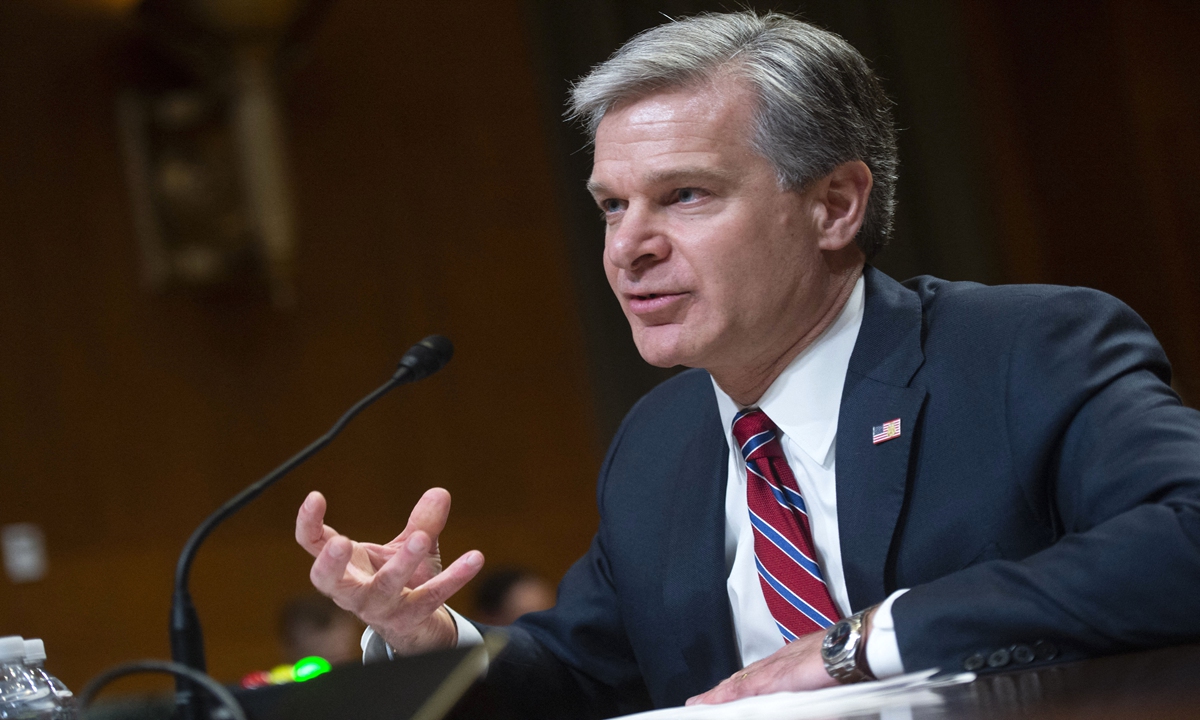 Director of the Federal Bureau of Investigation (FBI) Christopher Wray. Photo: AFP
US Federal Bureau of Investigation (FBI) Director Christopher Wray and UK's MI5 Director General Ken McCallum made an "unprecedented" public appearance together on Wednesday to hype the so-called economic espionage from China in a sensational tone. They also gave "sharply worded warnings" to business leaders present. On the same day, a US counterintelligence agency issued another warning that China has increased its use of overt and covert means to influence US policy-making.
Rather than a warning, this is more akin to intimidation of US and Western politicians and people in business, especially corporate executives, who cooperate with China. This has become the focus of the US and British security departments. It is easy to understand as this is what their work is about now, and hyping the "China threat" is how they carry out their work. Only by constantly fabricating and exaggerating the "security threat from China" to the greatest extent possible can they prove and highlight the value of their existence, allowing them to reap greater benefits.
The current overall atmosphere in the US and UK toward China is abnormal. But their intelligence agencies, which are supposed to be active behind the scenes, have taken to it like a duck to water. They even appear in public and blatantly inform the public about their conspiracies and lies. Recently, US public opinion has begun to hype "precise strikes" against China in the field of science and technology, and it has been revealed that Washington is also stepping up its lobbying of other countries to cooperate with its high-tech export controls on China. Now, the US and British intelligence agencies are seizing the chance to carry out a public stunt whose focus is to smear China's "technology theft." Without doubt, this is a coordinated performance.
Just as the spokesperson of Chinese Embassy in UK said in the response, the intelligence services of the US and UK are notoriously expert at wiretapping, theft, infiltration and subversion.
In 2013, former NSA employee Edward Snowden exposed the large-scale monitoring scheme - Prism - by US and British intelligence agencies; not long ago, it was revealed that the US had remotely stolen 97 billion pieces of global internet data and 124 billion phone records within 30 days, and shared them with the "Five Eyes" countries, including the UK. It is clear which country is using large-scale state-sponsored hacking and which country is engaging in cyber theft through a global network of intelligence officers.
Why would thieves shout out "catch the thief"? This is not only to cover up their criminal behavior, but also to create a kind of "technological terrorism." Today, what Washington is most worried about is that its suppression and containment of China in the high-tech field has not only failed, but has instead allowed other countries to take the place in the Chinese market previously occupied by the US. As a result, it has to use its hegemonic system to do everything possible to create an atmosphere of terror in the world in an attempt to prevent normal economic and technological cooperation between China and other countries. It is not only China that needs to be vigilant against such sinister intentions.
The IMF once estimated that technological decoupling may lead to losses in the order of 5 percent of GDP for many economies, about 10 times the losses caused by the trade war the US launched against China. At present, the world is facing severe challenges in bringing about global economic recovery. All countries need to overcome these difficulties together, rather than stir up conflicts and confrontations by forming small cliques.
But at this time, US and British politicians are engaging in "technological terrorism" against China, the world's largest market with great potential, the largest goods trading country, a key link in the global industrial chain, the world's largest economic growth engine, and the most populous country. This is not only shameless, but almost crazy.
Director of the Federal Bureau of Investigation (FBI) Christopher Wray. Photo: AFP
US Federal Bureau of Investigation (FBI) Director Christopher Wray and UK's MI5 Director General Ken McCallum made an "unprecedented" public appearance together on Wednesday to hype the so-called economic espionage from China in a sensational tone. They also gave "sharply worded warnings" to business leaders present. On the same day, a US counterintelligence agency issued another warning that China has increased its use of overt and covert means to influence US policy-making.
Rather than a warning, this is more akin to intimidation of US and Western politicians and people in business, especially corporate executives, who cooperate with China. This has become the focus of the US and British security departments. It is easy to understand as this is what their work is about now, and hyping the "China threat" is how they carry out their work. Only by constantly fabricating and exaggerating the "security threat from China" to the greatest extent possible can they prove and highlight the value of their existence, allowing them to reap greater benefits.
The current overall atmosphere in the US and UK toward China is abnormal. But their intelligence agencies, which are supposed to be active behind the scenes, have taken to it like a duck to water. They even appear in public and blatantly inform the public about their conspiracies and lies. Recently, US public opinion has begun to hype "precise strikes" against China in the field of science and technology, and it has been revealed that Washington is also stepping up its lobbying of other countries to cooperate with its high-tech export controls on China. Now, the US and British intelligence agencies are seizing the chance to carry out a public stunt whose focus is to smear China's "technology theft." Without doubt, this is a coordinated performance.
Just as the spokesperson of Chinese Embassy in UK said in the response, the intelligence services of the US and UK are notoriously expert at wiretapping, theft, infiltration and subversion.
In 2013, former NSA employee Edward Snowden exposed the large-scale monitoring scheme - Prism - by US and British intelligence agencies; not long ago, it was revealed that the US had remotely stolen 97 billion pieces of global internet data and 124 billion phone records within 30 days, and shared them with the "Five Eyes" countries, including the UK. It is clear which country is using large-scale state-sponsored hacking and which country is engaging in cyber theft through a global network of intelligence officers.
Why would thieves shout out "catch the thief"? This is not only to cover up their criminal behavior, but also to create a kind of "technological terrorism." Today, what Washington is most worried about is that its suppression and containment of China in the high-tech field has not only failed, but has instead allowed other countries to take the place in the Chinese market previously occupied by the US. As a result, it has to use its hegemonic system to do everything possible to create an atmosphere of terror in the world in an attempt to prevent normal economic and technological cooperation between China and other countries. It is not only China that needs to be vigilant against such sinister intentions.
The IMF once estimated that technological decoupling may lead to losses in the order of 5 percent of GDP for many economies, about 10 times the losses caused by the trade war the US launched against China. At present, the world is facing severe challenges in bringing about global economic recovery. All countries need to overcome these difficulties together, rather than stir up conflicts and confrontations by forming small cliques.
But at this time, US and British politicians are engaging in "technological terrorism" against China, the world's largest market with great potential, the largest goods trading country, a key link in the global industrial chain, the world's largest economic growth engine, and the most populous country. This is not only shameless, but almost crazy.
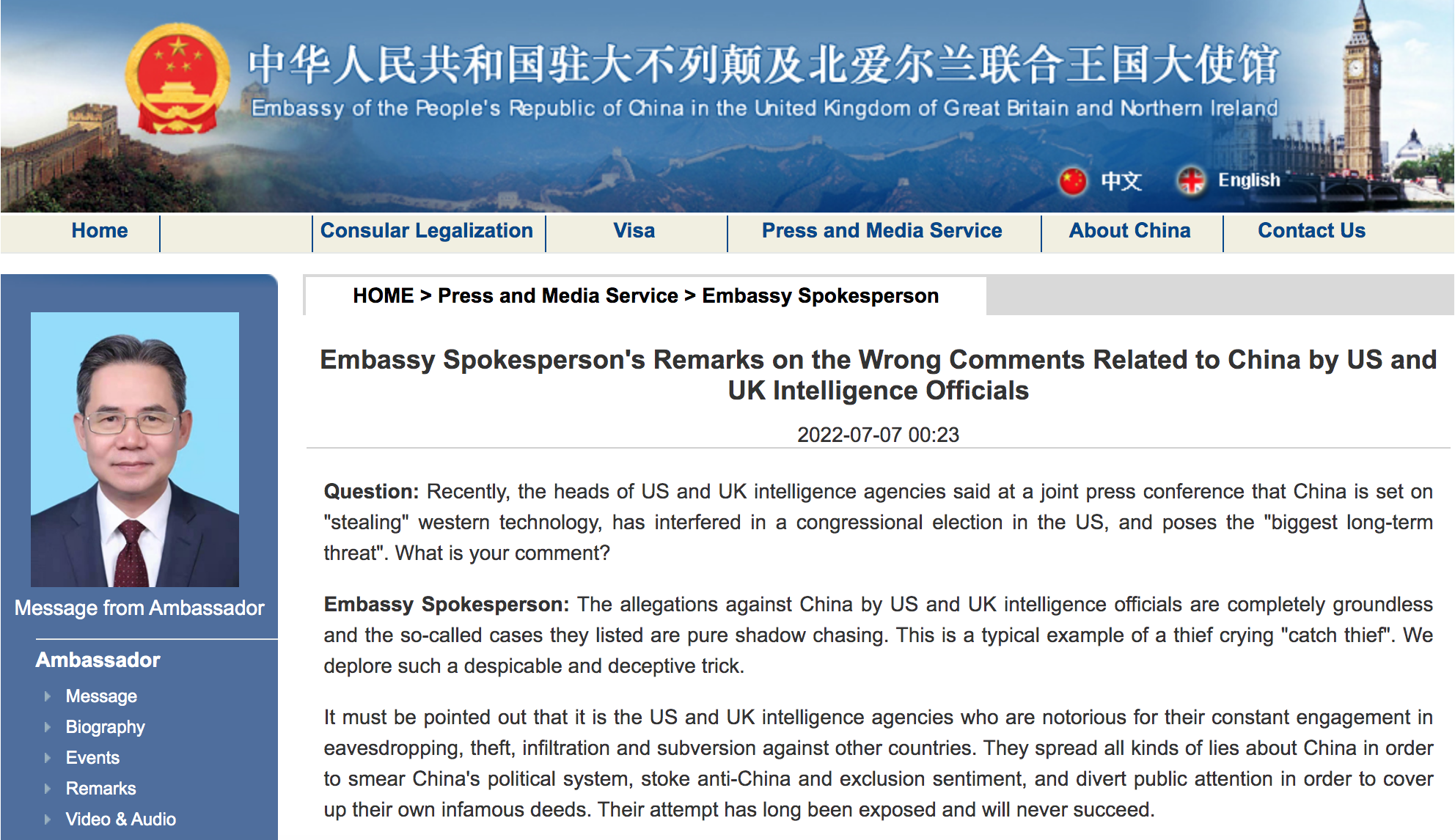

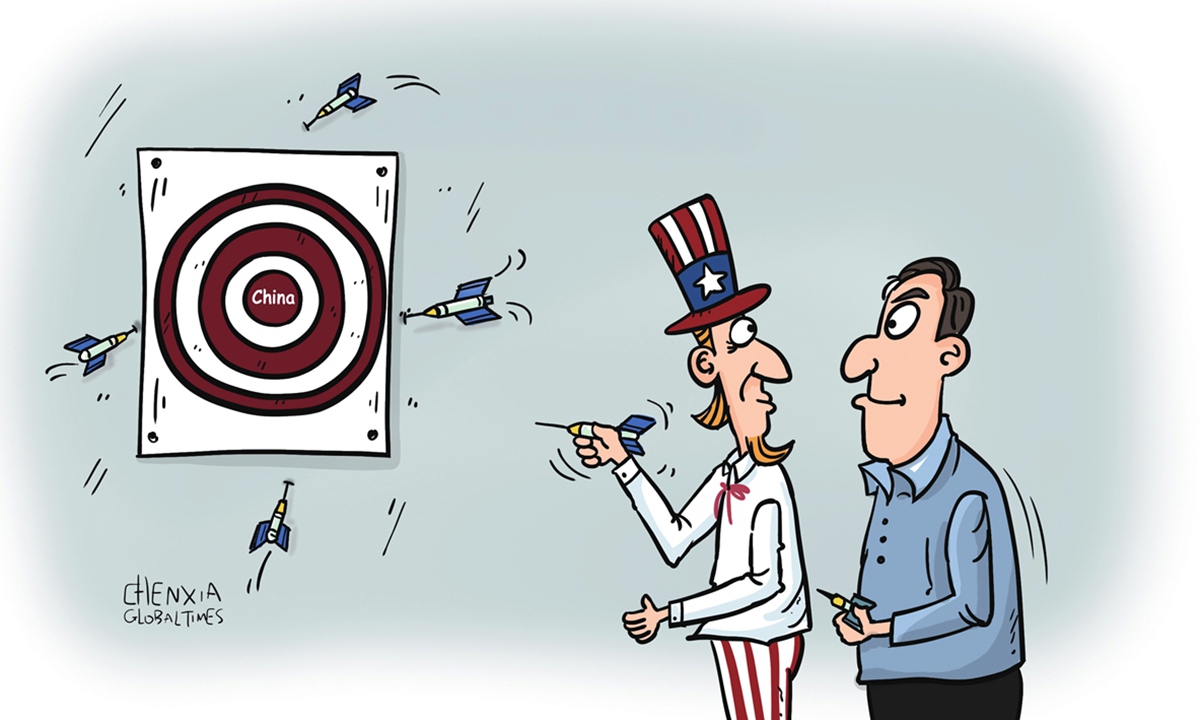

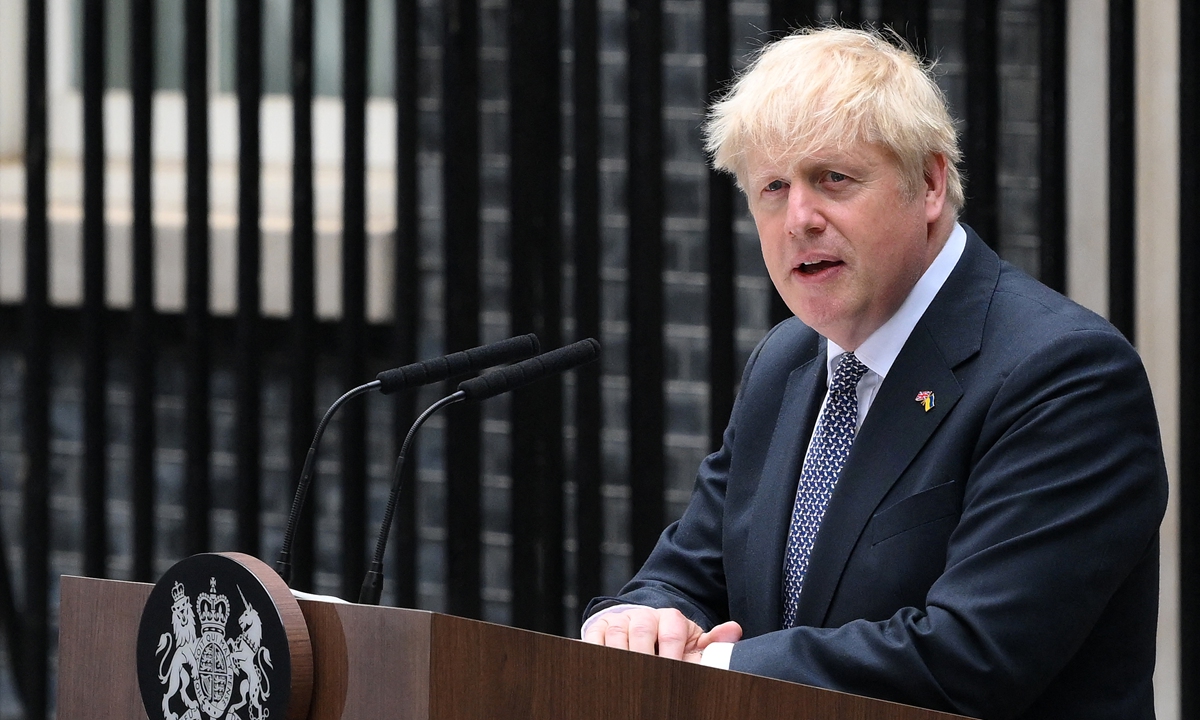
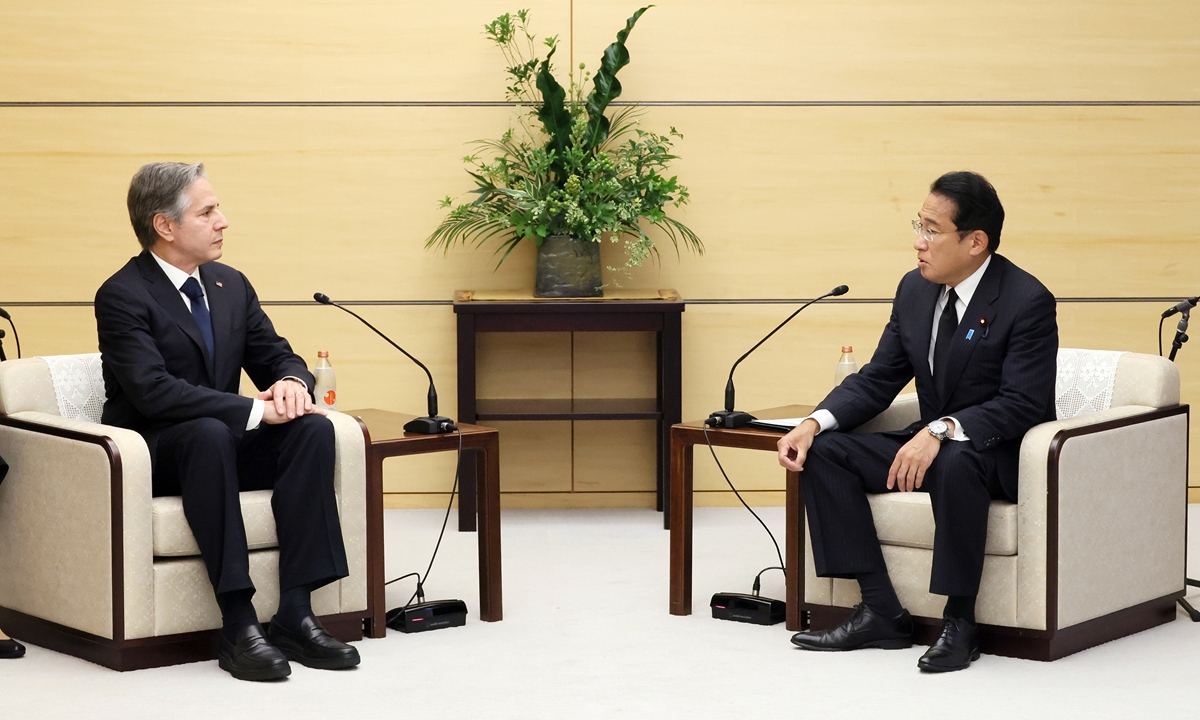











fanfusuzi